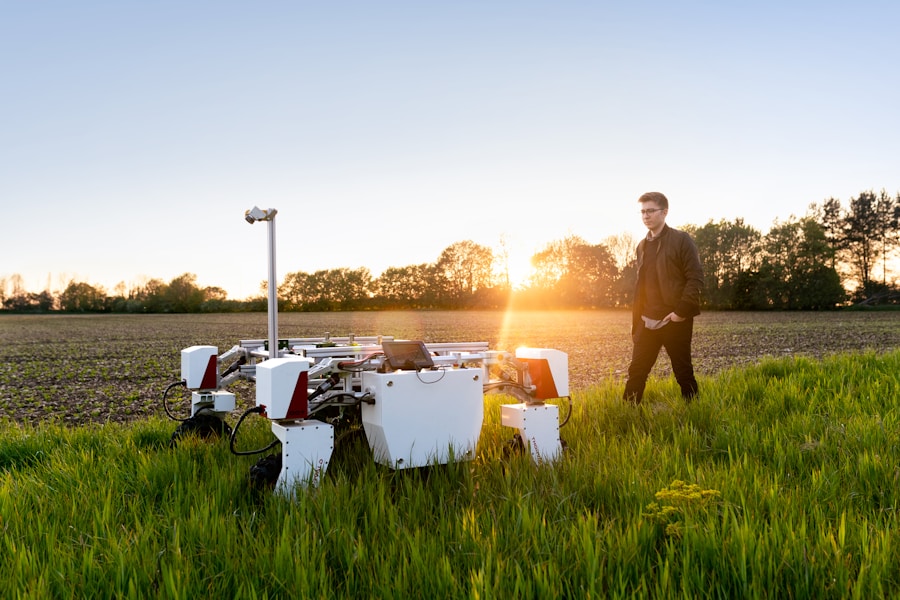In the rapidly evolving landscape of technology, artificial intelligence (AI) has emerged as a transformative force across various domains, including writing. AI-powered writing assistance tools have gained significant traction, offering users a blend of convenience and efficiency that was previously unimaginable.
As we delve into the world of AI writing assistants, we will explore their functionalities, benefits, and the future they promise. The rise of AI in writing assistance is not merely a trend; it represents a paradigm shift in how we approach communication. With the increasing demand for high-quality content in both personal and professional settings, these tools have become indispensable.
They not only help users produce error-free text but also provide insights into style, tone, and clarity. As we navigate through this article, we will uncover the various facets of AI-powered writing assistance, shedding light on how these innovations are reshaping our writing experiences. AI systems are revolutionizing industries, for more information visit AI systems.
Key Takeaways
- AI-powered writing assistance uses advanced technology to help users improve their writing skills and productivity.
- It can effectively correct grammar and spelling errors, making the writing process more efficient and accurate.
- AI-powered writing assistance can provide style suggestions for emails, helping users communicate more effectively and professionally.
- It has the capability to generate automatic text, saving time and effort for users who need to create content quickly.
- Understanding how AI-powered writing assistance works can help users maximize its benefits and improve their writing skills.
Grammar and Spelling Corrections
One of the most fundamental features of AI-powered writing assistance is its ability to correct grammar and spelling errors. Traditional spell checkers have long been a staple in word processing software, but AI takes this functionality to a whole new level. By employing natural language processing (NLP) techniques, these tools can identify not only misspelled words but also contextual errors that may go unnoticed by conventional spell checkers.
This means that users can expect a more nuanced understanding of language, leading to more accurate corrections. Moreover, AI-driven grammar checkers analyze sentence structure and syntax, offering suggestions that enhance readability and coherence. For instance, they can flag passive voice usage or overly complex sentences, prompting users to revise their writing for clarity.
This level of sophistication is particularly beneficial for non-native speakers or those who may struggle with the intricacies of English grammar.
Style Suggestions in Emails

In the realm of professional communication, the tone and style of emails can significantly impact how messages are received. AI-powered writing assistants excel in offering style suggestions that help users convey their intended message effectively. These tools analyze the context of the email and provide recommendations on word choice, sentence structure, and overall tone.
For example, an email intended for a formal audience may benefit from a more polished vocabulary and a structured format, while a casual message might call for a friendly and conversational tone. Additionally, AI can help users maintain consistency in their writing style across multiple emails or documents. This is particularly useful for businesses that prioritize brand voice and identity.
By ensuring that all communications align with the desired tone, companies can foster a cohesive image that resonates with their audience. The ability to tailor style suggestions based on context not only enhances the quality of communication but also saves time for busy professionals who may not have the luxury to meticulously edit every email.
Automatic Text Generation
One of the most exciting advancements in AI-powered writing assistance is automatic text generation. This feature allows users to generate content based on prompts or keywords, streamlining the writing process significantly. Whether it’s drafting blog posts, creating marketing copy, or even composing social media updates, AI can produce coherent and contextually relevant text in a matter of seconds.
This capability is particularly advantageous for content creators who often face writer’s block or tight deadlines. The technology behind automatic text generation relies on sophisticated models trained on vast datasets, enabling them to understand language patterns and generate human-like text. Users can input specific parameters or themes, and the AI will craft content that aligns with those guidelines.
While this feature is incredibly powerful, it also raises questions about originality and authenticity in writing. As we explore this aspect further, it becomes clear that while AI can assist in generating ideas and drafts, human oversight remains crucial to ensure that the final product reflects individual creativity and voice.
How AI-powered Writing Assistance Works
At its core, AI-powered writing assistance operates through a combination of natural language processing (NLP), machine learning algorithms, and vast datasets. NLP enables these tools to understand and interpret human language, allowing them to analyze text for grammar, style, and context. Machine learning algorithms continuously improve the performance of these tools by learning from user interactions and feedback.
This iterative process ensures that the AI becomes more adept at recognizing patterns and making accurate suggestions over time. The underlying technology often involves deep learning models that have been trained on diverse linguistic data sources. These models can identify nuances in language usage, such as idiomatic expressions or cultural references, which enhances their ability to provide relevant suggestions.
Additionally, many AI writing assistants utilize cloud-based systems that allow for real-time updates and improvements. This means that users benefit from the latest advancements in AI technology without needing to install software updates manually.
Benefits of Using AI-powered Writing Assistance

Boosting Productivity
These tools significantly reduce the time spent on editing and proofreading, allowing users to focus on generating ideas and content rather than getting bogged down by grammatical errors or stylistic inconsistencies. This efficiency is particularly valuable in fast-paced environments where deadlines are tight.
Fostering Continuous Improvement
Furthermore, AI writing assistants promote learning and development by providing users with immediate feedback on their writing. As individuals receive suggestions for improvement, they can internalize these lessons and apply them to future writing endeavors. This educational aspect fosters a culture of continuous improvement, empowering users to refine their skills over time.
Accessibility for All
Additionally, the accessibility of these tools means that anyone—from students to seasoned professionals—can benefit from enhanced writing capabilities without requiring extensive training or expertise.
Limitations and Considerations
Despite the numerous benefits associated with AI-powered writing assistance, it is essential to acknowledge their limitations. One significant concern is the potential for over-reliance on these tools, which may hinder users’ ability to develop their writing skills independently. While AI can provide valuable insights and corrections, it cannot replace the critical thinking and creativity that human writers bring to their work.
Moreover, there are ethical considerations surrounding originality and plagiarism when using automatic text generation features. Users must be cautious about how they incorporate AI-generated content into their work to ensure that they maintain authenticity and avoid unintentional copying of ideas or phrases. Additionally, while AI has made significant strides in understanding language nuances, it may still struggle with context-specific references or cultural subtleties that require human insight.
Future Developments in AI-powered Writing Assistance
Looking ahead, the future of AI-powered writing assistance holds immense promise as technology continues to advance at an unprecedented pace. One area ripe for development is the integration of more sophisticated emotional intelligence into these tools. By understanding not only the words used but also the emotions behind them, AI could offer even more tailored suggestions that resonate with readers on a deeper level.
Furthermore, as machine learning models become increasingly sophisticated, we can expect improvements in contextual understanding and creativity in text generation. Future iterations may be able to produce not just coherent text but also content that reflects unique voices or styles based on user preferences. This evolution could lead to a new era of personalized writing assistance that adapts seamlessly to individual needs.
In conclusion, AI-powered writing assistance represents a significant leap forward in how we approach communication in our digital age. With capabilities ranging from grammar corrections to automatic text generation, these tools are reshaping our writing experiences while offering valuable support for both personal and professional endeavors. As we embrace this technology, it is crucial to remain mindful of its limitations while harnessing its potential to enhance our writing skills and productivity in an increasingly interconnected world.
If you are interested in exploring the intersection of technology and communication, you may also enjoy reading about the challenges of the hybrid reality in the metaverse. This article discusses how the metaverse is impacting our real-world experiences and the potential implications for society. To learn more, check out this insightful piece.
FAQs
What is AI-powered writing assistance?
AI-powered writing assistance refers to the use of artificial intelligence technology to provide grammar and spelling corrections, style suggestions, and even automatic text generation in written communication such as emails, reports, and other documents.
How does AI-powered writing assistance work?
AI-powered writing assistance works by using natural language processing (NLP) and machine learning algorithms to analyze and understand the context of the text. It can then provide suggestions for grammar and spelling corrections, offer style recommendations, and even generate text based on the input provided.
What are the benefits of using AI-powered writing assistance?
The benefits of using AI-powered writing assistance include improved writing accuracy, increased productivity, and enhanced communication. It can help users to write more effectively and efficiently, saving time and effort in the process.
What are some examples of AI-powered writing assistance features?
Some examples of AI-powered writing assistance features include real-time grammar and spelling corrections, style suggestions for improving the overall tone and clarity of the text, and automatic text generation for repetitive or routine tasks.
Is AI-powered writing assistance suitable for all types of writing?
AI-powered writing assistance is suitable for a wide range of writing tasks, including emails, reports, essays, and other forms of written communication. However, it may not be suitable for highly specialized or technical writing that requires domain-specific knowledge and expertise.











Leave a Reply